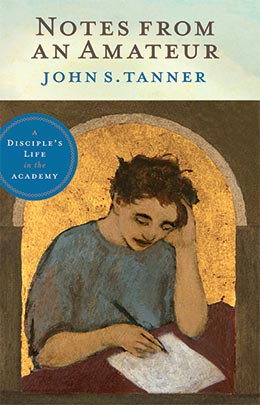E Pluribus Unum
John S. Tanner, Notes from an Ameteur: A Disciple’s Life in the Academy (Provo, UT: Religious Studies Center; Salt Lake City: Deseret Book, 2011), 59–61.
About a year ago, BYU held a campus-wide symposium on academic freedom. The conversation often circled back to the need to accommodate the competing but legitimate claims of unity and diversity. It occurred to me as I listened to the discussion that the issue belonged within an older and larger conversation about how to reconcile the “many” and the “one” in a healthy society. The Founders wrestled with this problem as they set out to form a more perfect union. They captured this perennial challenge in a now famous Latin aphorism: e pluribus unum, “out of many, one.”
This saying expressed the Founders’ aspiration to forge a new nation out of disparate colonies and a new people out of diverse cultures. E pluribus unum resonated with an America engaged in the task of nation building. It continues to resonate with Americans today because it speaks to our ongoing national project of fashioning pluralistic constituents into a cohesive commonwealth.
We used to imagine this national project through the metaphor of America as a melting pot, an image that goes back at least to Letters from an American Farmer (1782) by John Hector St. John Crèvecoeur. Crèvecoeur envisioned our nation at its birth as a place where “individuals of all nations are melted into a new race of man.” [1]
Today the metaphor of America as a melting pot has largely fallen out of favor. It is considered too hegemonic and implicitly violent. Nowadays we tend to reach for metaphors of assimilation that preserve and celebrate our diverse racial, ethnic, and cultural identities—gentle metaphors such as “salad bowl,” “mosaic,” “tapestry,” or “patchwork quilt.” Such metaphors, however, lack the teleology of e pluribus unum. Instead of anticipating progression from the many to the one, they anticipate the continuation of the many within the one. They celebrate diversity rather than unity. In this small matter of metaphors, we can thus discern a larger disagreement over what constitutes America’s proper national ideal: diversity or unity.
As I’ve thought about this question over the years, it has seemed to me that healthy, flourishing social institutions require a mix of both “pluribus” and “unum,” as it were. People need room to express individual differences, talents, tastes, and identities. They also need a sense of common purpose, norms, values, and ideals.
This is true of nations and schools, communities and families. It is even true of the Church, which consists of many members but one body: “We have many members in one body. . . . So we being many, are one body in Christ” (Romans 12:4–5). The very term member is metaphorical; it harks back to Paul’s extended analogy in 1 Corinthians 12 of the Church as a single body comprising many members with a diversity of valuable gifts and necessary functions. Paul’s analogy constitutes a sort of scriptural version of e pluribus unum applied to the Church.
BYU also accommodates both individual diversity and institutional unity. A few years ago, we crafted an “Enriched Environment” statement articulating our commitment to diversity and unity for the students we admit. The statement, which has been approved by the BYU Board of Trustees, reads in part:
The university seeks qualified students of various talents and backgrounds, including geographic, educational, cultural, ethnic, and racial, who relate together in such a manner that they are ‘no more strangers and foreigners, but fellow citizens with the saints, and of the household of God’ (Ephesians 2:19). It is the university’s judgment that providing educational opportunities for a mix of students who share gospel values and come from a variety of backgrounds and experiences is an important educational asset to BYU. [2]
Notice the conjunction of diversity and unity: “various talents” but all “qualified”; divergent “backgrounds” but all comfortably gathered in the same “household”; a “mix of students” but all sharing “gospel values.”
BYU unites individuals possessing both a rich diversity of gifts and a shared commitment to the common good. We gather individuals with different talents, tastes, disciplinary expertise, interests, life experiences, creative abilities, and so forth. We cannot flourish without such individual diversity. We need experts in management, mathematics, microbiology, music, and even Milton. At the same time, BYU unites diverse individuals in a community bound together by a common commitment to our institutional mission and, for most, by an even deeper commitment to covenants that unite us as disciples in our diverse disciplines. We cannot flourish without a sense of common purpose. This admixture of unity and diversity makes life at BYU wonderfully enlivening for me. We are many, and we are one.
Notes
[1] John Hector St. John Crèvecoeur, Letters from an American Farmer, in Concise Anthology of American Literature, ed. George McMichael, 4th ed. (Upper Saddle River, NJ: Prentice Hall, 1998), 352.
[2] “University Statement on Fostering an Enriched Environment,” Brigham Young University, https://
